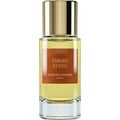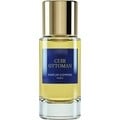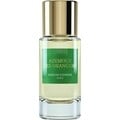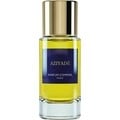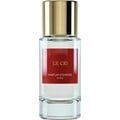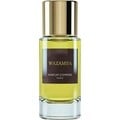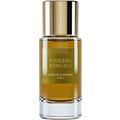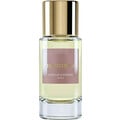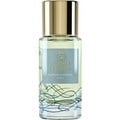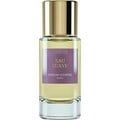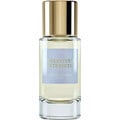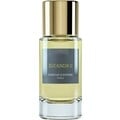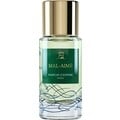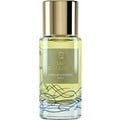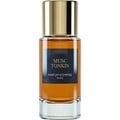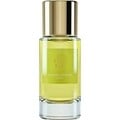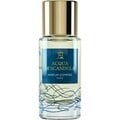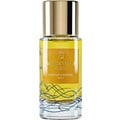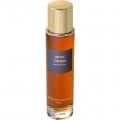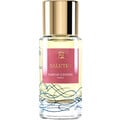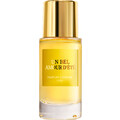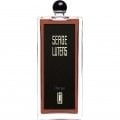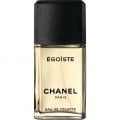03/08/2020

Anarlan
21 Reviews
Translated
Show original

Anarlan
Top Review
22
Spring in the horse stables
"For God's sake!"
With verve and under dramatic invocation of the saints and the Virgin Mary, the pot with the beautifully flowering "Bridal Crown", a small, white, stuffed narcissus variety, which I recently received as a small thank you, is transported one room further from the dining room by my (undoubtedly) better half.
Although I like the heavy, somehow greasy, somewhat rough aroma of the white flowers, the olfactory proximity to horse stables cannot be denied. I admit that in the dining room, the scent of the blossoms unfolds an - let's put it diplomatically - inappropriate effect, and I'm also not quite sure whether a bride would be suitably scented with a wreath of daffodil blossoms. It would probably depend on the tolerance of the subject to be married with regard to the scent of narcissus. So I admit that the pot may stink one room further on from now on.
In spring, which is unfortunately still very much in the background, you can see them almost everywhere, and it is usually not the large-flowered, unfilled, classic yellow daffodils (which I find a little boring) that give off the typical narcissus scent, but the smaller, pale yellow or white flowering daffodils, at first glance somewhat more inconspicuous than the classic representatives, but completely unmistakable as far as their scent is concerned, and which bear such beautiful species names as "poet daffodils".
The plant has obviously attracted a certain amount of literary attention since ancient times, and it is probably also due to its scent. Legend has it that it was the beautiful young man Narkissos who spurned the nymph Echo's violent courtship and was punished by the gods for falling tragically in love with his own reflection. The unfulfilled love for his own face, which he saw reflected in the surface of a body of water, literally starved the boy. On his grave, however, a charming flower with a narcotic (yes!) fragrance soon blossomed, lowering the little flower head: the first narcissus in the world was born, and its offspring has since split mankind into such specimens as myself and others (see above).
The fact that the fragrance doesn't come across as spring-like, white-flowery and delicate at all, but would be better suited to dry, hot, sun-drenched pastures, where the hay bales and horse droppings dry in the midday heat, may also have crossed the mind of Monsieur Corticchiato, the mastermind of Parfum d'Empire, when he created Tabac Tabou. Parfum d'Empire has a small but loyal following on Parfumo, and I can count myself among them without reservation. Corticchio's fragrances are not always easy, but strong in creating images. They often take you by the second or third olfactory nose, but they are mostly French perfume history and elegantly distinguished, yet at the same time they are stubborn enough to belong in a niche.
With Tabac Tabou, the narcissus with its powerful fragrance aspects is at the centre. Tobacco is, if at all, a transparent accessory, and at the heart of the fragrance it rather underlines the rough, heated fullness with which the narcissus is at the centre of the fragrance. I imagine that I perceive both the juicy aspects of the tobacco leaf and the scratchy roughness of tobacco smoke, but both aspects are more likely to envelop the flowering centre of the fragrance. Anyone expecting a classic tobacco scent is therefore likely to be disappointed. Nevertheless, Tabac Tabou is not a narcissus soliflor, as some other scent aspects are woven in to create the aforementioned image of a hot, dry savannah. The beginning is herbaceous and green, more to do with the drying plant sap and stems of the narcissus than with its floral ornamentation, with the sunny-warm voice of honey appearing right at the beginning. The golden, tart honey note remains with the fragrance until the end and is gently fired by the Italian strawflower (immortelle), but weakens slowly as the show progresses to make way for the real stars of the show: Daffodil blossoms in their physical, greasy, almost animalistic fullness reminiscent of horse stables, and sun-kissed, herbaceous, hay. The hay note is just when the honey note weakens after some time, most clearly perceptible and underlines the dry, brittle, sun-drenched, warm heart of the fragrance. The pyramid lists musk, which I - thinking of the slowly increasing scratchy dustiness of the fragrance - want to believe.
When classifying the scent, the combination green/hay would probably be most appropriate in the fougère direction, but in its dry-brittle-spicy nature it also reminded me of old Oriental chypre and I could imagine that perhaps a few scent memories of old treasures of this direction in Mr. Corticchiato's work had their influence in the creation of the scent.
Tabac Tabou is a demanding, dry, roughened, completely unspringing narcissistic scent, which I like to and literally rub against again and again, but which makes it rather difficult to wear due to its special characteristics and with regard to my sensitive environment. In hot, dusty summers it is probably great.
For those who are looking for a seasonal white flowering spring mood, "Bridal Crown" is a filled flowering narcissus variety ... let's leave it at that.
With verve and under dramatic invocation of the saints and the Virgin Mary, the pot with the beautifully flowering "Bridal Crown", a small, white, stuffed narcissus variety, which I recently received as a small thank you, is transported one room further from the dining room by my (undoubtedly) better half.
Although I like the heavy, somehow greasy, somewhat rough aroma of the white flowers, the olfactory proximity to horse stables cannot be denied. I admit that in the dining room, the scent of the blossoms unfolds an - let's put it diplomatically - inappropriate effect, and I'm also not quite sure whether a bride would be suitably scented with a wreath of daffodil blossoms. It would probably depend on the tolerance of the subject to be married with regard to the scent of narcissus. So I admit that the pot may stink one room further on from now on.
In spring, which is unfortunately still very much in the background, you can see them almost everywhere, and it is usually not the large-flowered, unfilled, classic yellow daffodils (which I find a little boring) that give off the typical narcissus scent, but the smaller, pale yellow or white flowering daffodils, at first glance somewhat more inconspicuous than the classic representatives, but completely unmistakable as far as their scent is concerned, and which bear such beautiful species names as "poet daffodils".
The plant has obviously attracted a certain amount of literary attention since ancient times, and it is probably also due to its scent. Legend has it that it was the beautiful young man Narkissos who spurned the nymph Echo's violent courtship and was punished by the gods for falling tragically in love with his own reflection. The unfulfilled love for his own face, which he saw reflected in the surface of a body of water, literally starved the boy. On his grave, however, a charming flower with a narcotic (yes!) fragrance soon blossomed, lowering the little flower head: the first narcissus in the world was born, and its offspring has since split mankind into such specimens as myself and others (see above).
The fact that the fragrance doesn't come across as spring-like, white-flowery and delicate at all, but would be better suited to dry, hot, sun-drenched pastures, where the hay bales and horse droppings dry in the midday heat, may also have crossed the mind of Monsieur Corticchiato, the mastermind of Parfum d'Empire, when he created Tabac Tabou. Parfum d'Empire has a small but loyal following on Parfumo, and I can count myself among them without reservation. Corticchio's fragrances are not always easy, but strong in creating images. They often take you by the second or third olfactory nose, but they are mostly French perfume history and elegantly distinguished, yet at the same time they are stubborn enough to belong in a niche.
With Tabac Tabou, the narcissus with its powerful fragrance aspects is at the centre. Tobacco is, if at all, a transparent accessory, and at the heart of the fragrance it rather underlines the rough, heated fullness with which the narcissus is at the centre of the fragrance. I imagine that I perceive both the juicy aspects of the tobacco leaf and the scratchy roughness of tobacco smoke, but both aspects are more likely to envelop the flowering centre of the fragrance. Anyone expecting a classic tobacco scent is therefore likely to be disappointed. Nevertheless, Tabac Tabou is not a narcissus soliflor, as some other scent aspects are woven in to create the aforementioned image of a hot, dry savannah. The beginning is herbaceous and green, more to do with the drying plant sap and stems of the narcissus than with its floral ornamentation, with the sunny-warm voice of honey appearing right at the beginning. The golden, tart honey note remains with the fragrance until the end and is gently fired by the Italian strawflower (immortelle), but weakens slowly as the show progresses to make way for the real stars of the show: Daffodil blossoms in their physical, greasy, almost animalistic fullness reminiscent of horse stables, and sun-kissed, herbaceous, hay. The hay note is just when the honey note weakens after some time, most clearly perceptible and underlines the dry, brittle, sun-drenched, warm heart of the fragrance. The pyramid lists musk, which I - thinking of the slowly increasing scratchy dustiness of the fragrance - want to believe.
When classifying the scent, the combination green/hay would probably be most appropriate in the fougère direction, but in its dry-brittle-spicy nature it also reminded me of old Oriental chypre and I could imagine that perhaps a few scent memories of old treasures of this direction in Mr. Corticchiato's work had their influence in the creation of the scent.
Tabac Tabou is a demanding, dry, roughened, completely unspringing narcissistic scent, which I like to and literally rub against again and again, but which makes it rather difficult to wear due to its special characteristics and with regard to my sensitive environment. In hot, dusty summers it is probably great.
For those who are looking for a seasonal white flowering spring mood, "Bridal Crown" is a filled flowering narcissus variety ... let's leave it at that.
11 Comments




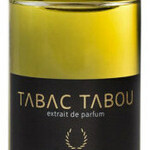














 BoBoChamp
BoBoChamp Itchynose
Itchynose Pierreparfum
Pierreparfum OceanCliffs
OceanCliffs Holscentbar
Holscentbar